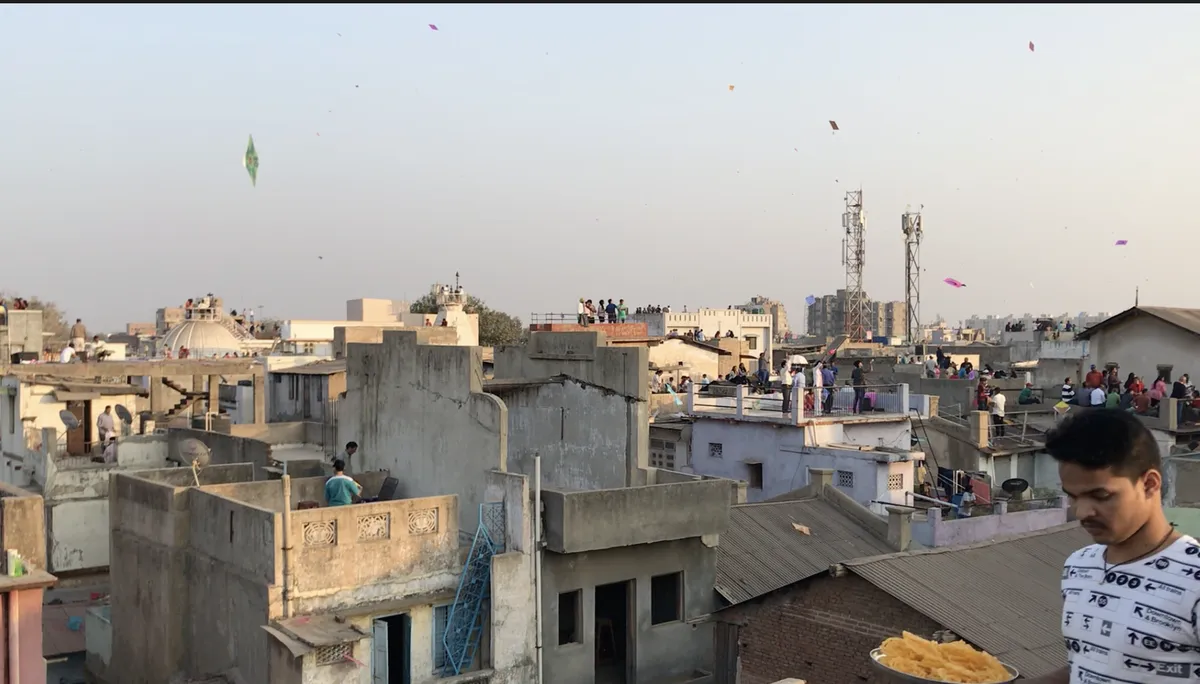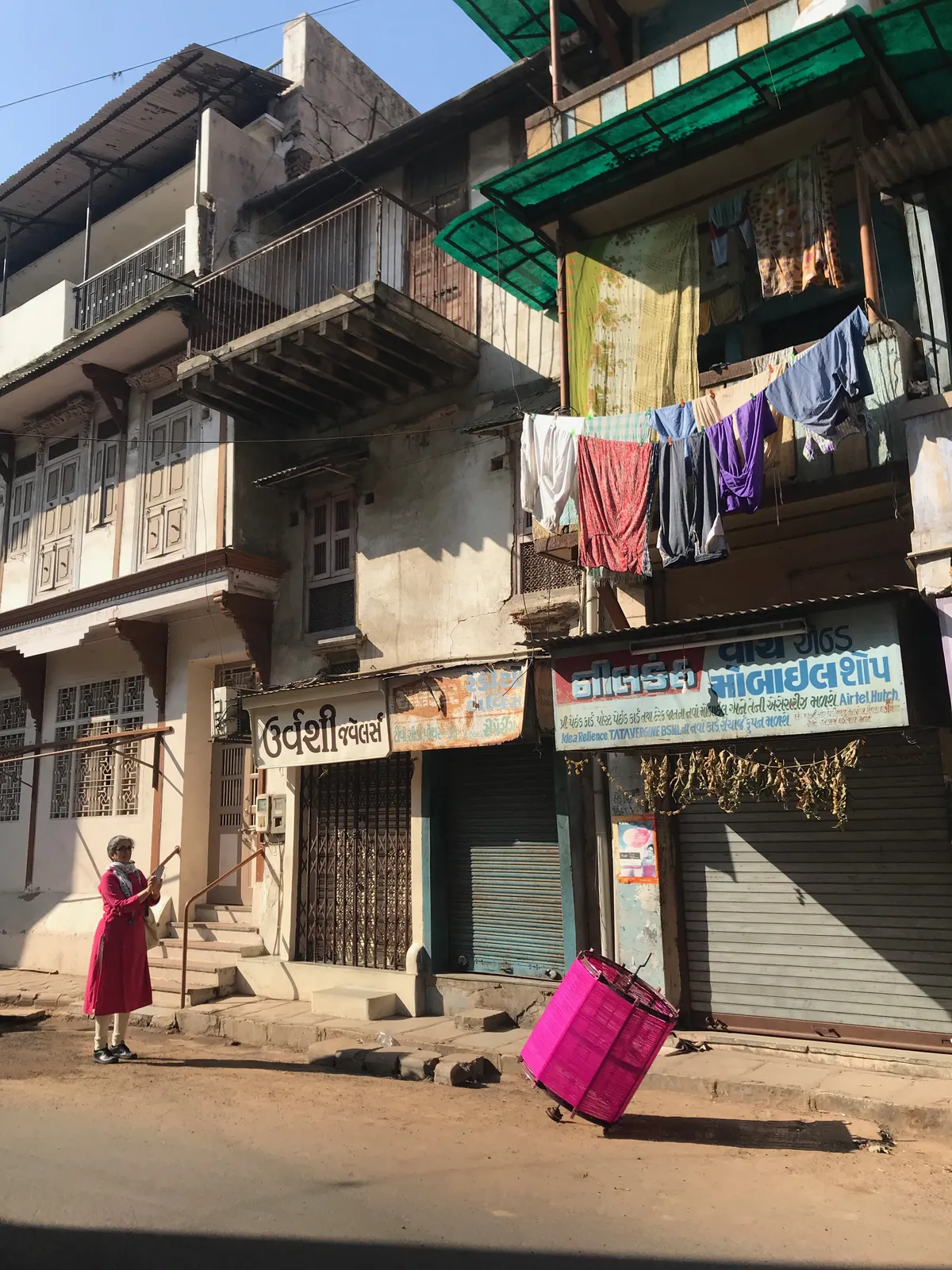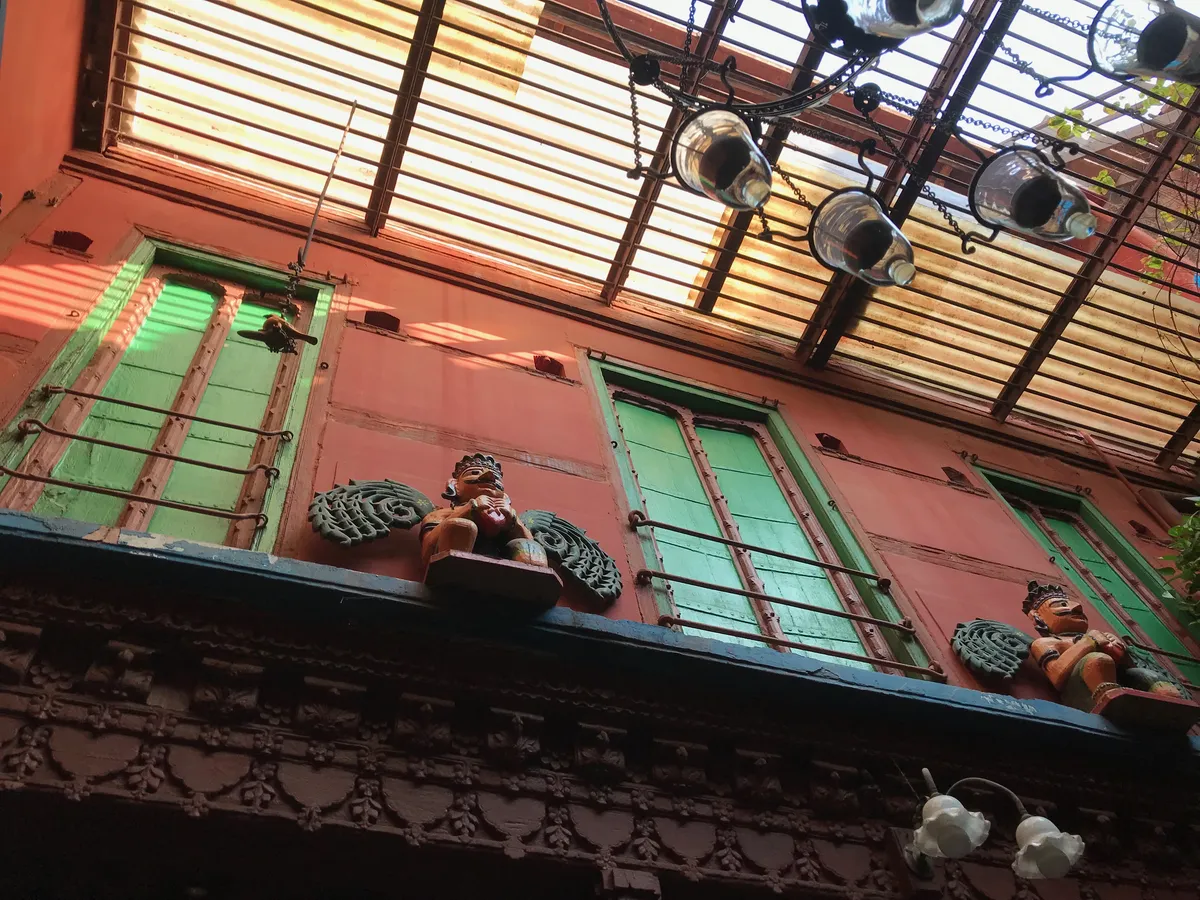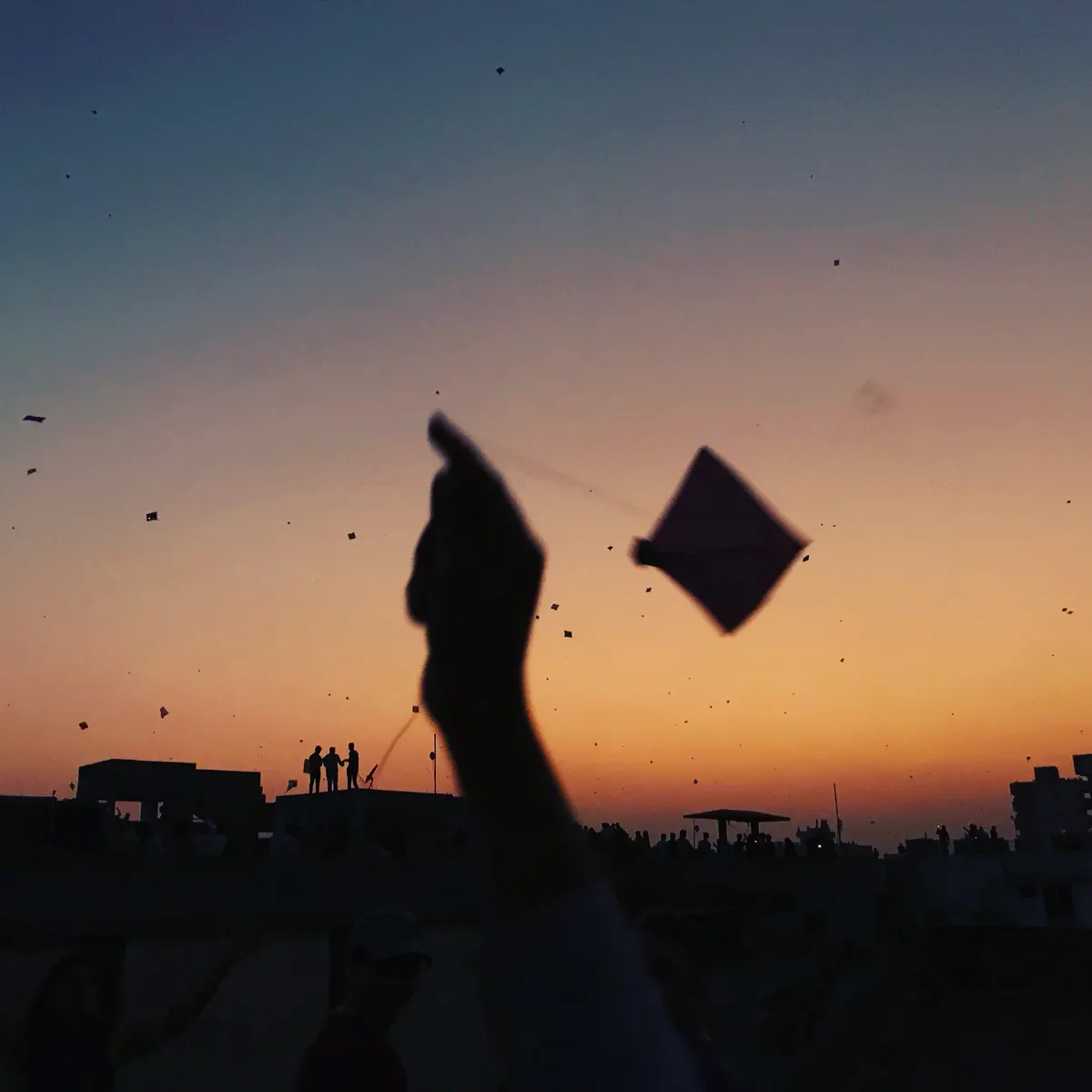To Fly A Kite
January 14 is one of my favorite days to be in India. In Gujarat, where my family lives it is Uttrayan, the kite flying day.
Roofs are flat and terraced here to provide relief from the heat. On Uttrayan families across the city emerge onto their rooftops to fly kites and drink tea and fried snacks.
Kites here are not the aerodynamic rigorously engineered kites I used to fly on Northern California's cold beaches, but lightweight squares of paper and bamboo. In the month leading up to Uttrayan stalls line the streets selling stacks and stacks of brightly colored kites and pink and green kite string (manja).
You buy in a stack because there is no point in getting overly sentimental about a kite.
The real game on Uttrayan isn't kite flying, it's kite cutting. From one rooftop to another neighbors will scissor their kites through the air, attempting to cut their rivals from the sky. Losers's cut kites will spin wildly and then plummet coming to rest on roofs, in trees, and on top of telephone poles. The next day kite string lattices the city like cobwebs.
Flyers will try anything to get an edge and for a long time that edge has been coating kite string in broken glass or metal leaving it razor sharp. This string which was reportedly first imported from China, hence it's name "chinese manja" is technically illegal now, because of how deadly the string can be if it trails across a roadway.
This year I'm in town for my cousin's wedding. Everyone was too busy (with arranging 7 different outfits) to fly kites. But, I still got to watch out my window and appreciate the dancing squares of color high in the sky. From my desk I could hear the groans and whoops of exultation from the kids on the neighboring roof. The day after the trees below my window were dotted with fallen kites, like huge Christmas ornaments haph-hazardly hung.

 A huge spindle of kite string
A huge spindle of kite string

